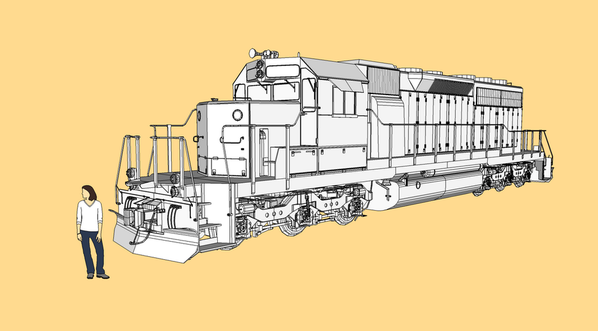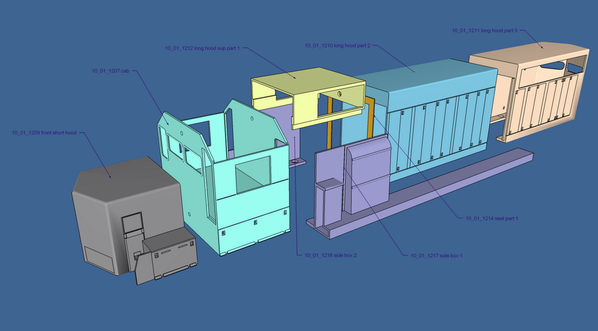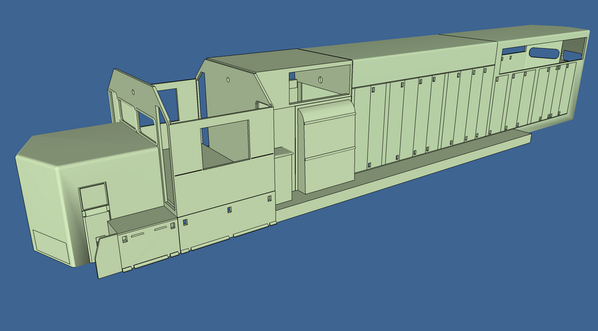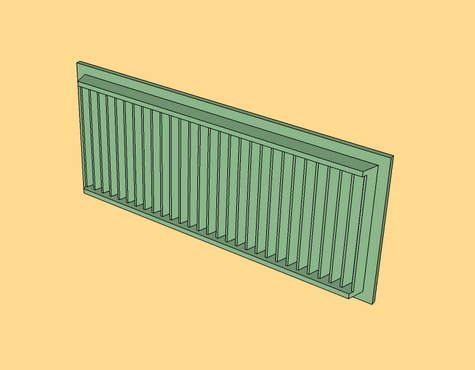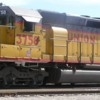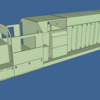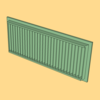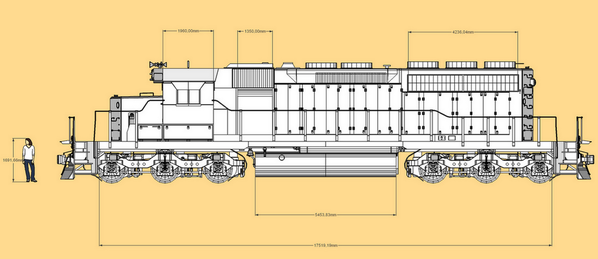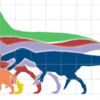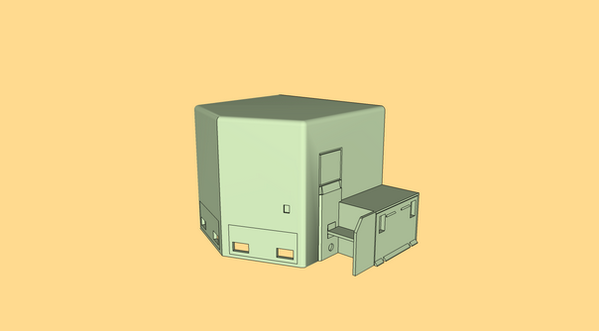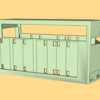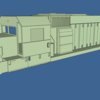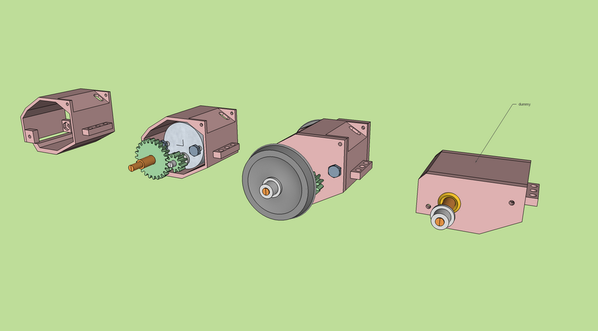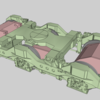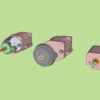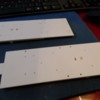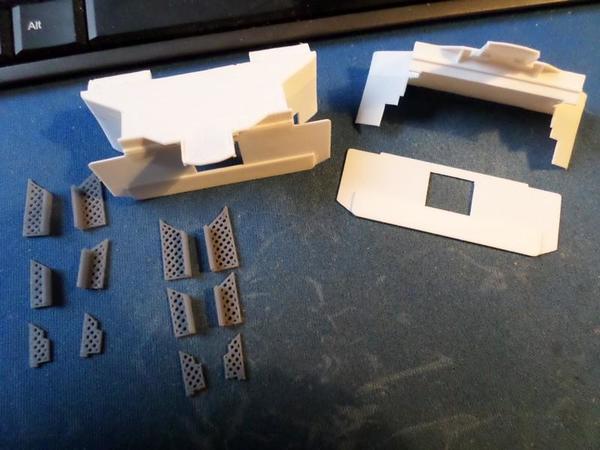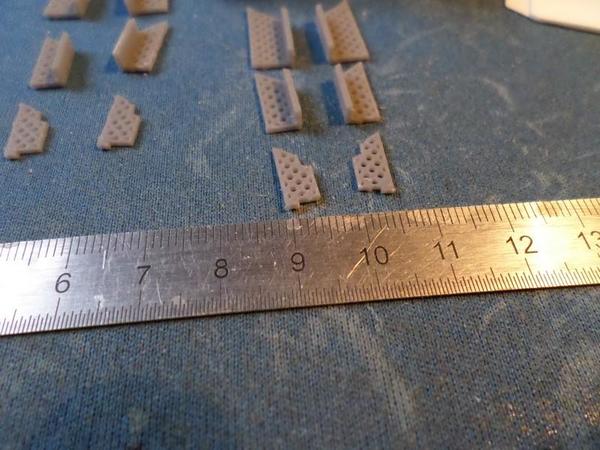Since I model and play US trains, I have always been arracted by the SD40-2. I have carefully read the thread "Weak reservations on Sunset 3rd Rail SD40-2 and posted some photos of my work.
SUZUCOVITCH member suggested that I make a thread about this engine and the way I designed it; that's what I do now.
The starting point is this photo:
and this drawing:
I have found it on the SKETCHUP Warehouse (thousands drawings of all kind), made by a guy nicknamed "Fat Bear" (thanks to him!). This drawing is in 1/1 scale as you can see with the young lady on the front of the engine and is not at all ready for 3D printing, but only for a TV or console game: for exemple, the shell has no thickness, all the rounded surfaces are made of triangles and the cab has no transparent windows.
So I have to start the work again with each component to make them printable after update to 1/48 scale (coefficient 0,0208333 for SKETCHUP users).
Once this big work done, I have gathered all the parts to have this result:
However, I noticed, according to the photos I've found on the net and the TRAINIAX's site drawings, that some parts were not the exact reality (dynamic brake housing, filter screens, ....), so I re-drew them. The two shots above are not yet updated.
I speak only about the shell and the chassis; later, I will show you the trucks, certainly the most difficult step of this project.
Now other shots; today, all the 3D components are made and I can show you the final assembly of the shell (without details added):
and the chassis:
Here are the parts I have re-drawn:
dynamic brake housing:
filter screens:
Little by little, I will purchase from PSC the pieces I need; I have them listed in a file.
In another post I will show you the other parts I've done.
All is made with SKETCHUP Make software (free version); I added only some plug-ins to make my work easier!
Believe me or not, it's an exciting project for me! it will probably be launched during next fall.
Wow, already lunchtime..........!!!!
See you later!!!
jpv in France





